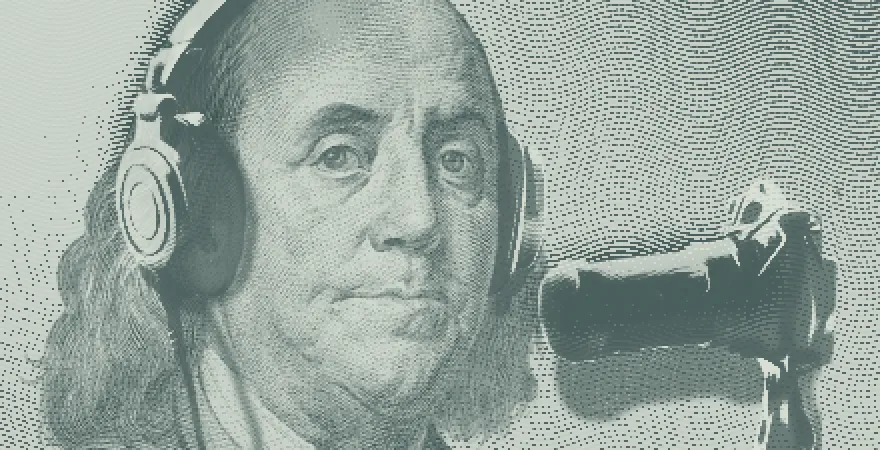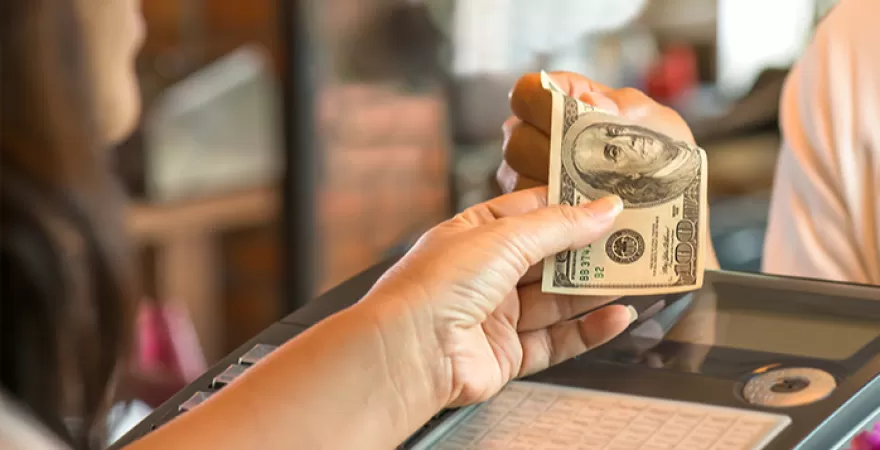[INTRO MUSIC PLAYS]
HOWARD: Hello and welcome to Noteworthy by the US U.S.Currency Education Program, or CEP. My name is Howard Williams and I'm the manager of the CEP. The CEP was responsible for ensuring the integrity of and trust in the US U.S.dollar by providing information and training resources to the public. Check out our website at uscurrency.gov to find free information and training resources on US U.S.currency. Leading our discussion today will be Maria Hawkins, who is joining us now.
MARIA: Hello, I'm Maria Hawkins, and I'm a member of the CEP team, and I support domestic and international outreach. And I'm so happy to be here with you all today. As you might imagine, we receive a lot of questions and many requests for advice at the CEP. In fact, over the past five years alone, the CEP has received over 5000 public inquiries about US U.S.currency. In today's episode, we'll answer some of the most commonly asked and submitted questions to the CEP and provide sound advice on topics such as what do you do if you suspect that you've received a counterfeit bill? So instead of turning to Dear Abby or Ann Landers, we've created our own advice columnist named Dear Bill. Get it?, Bill,.Llike money., Dear Bill is a fictional character who's ready to answer your questions about US U.S.currency. Today I am joined by Richelle Stento, the real person behind Dear Bill. Richelle has experience answering these questions, and she gets inquiries all the time because she leads our domestic outreach program for the CEP. She will share advice about how to determine if a banknote is real, what to do with older designs of US U.S.currency, and many more topics over the course of this podcast episode.
MARIA: Hey Richelle, could you start by telling us a little bit about your work?
RICHELLE: Thank you so much for having me here today. I've been really lucky to have first handfirsthand experience answering these questions in real time when engaging with the public and cash handlers on currency education. These cash handlers include cashiers, bank tellers, law enforcement, casino and gaming personnel, and even everyday consumers like you and me. I'm really excited to jump into these commonly asked questions.
MARIA: Thanks for providing that context. SoSo, let's get started and dig into five commonly asked questions received by the Currency Education Program.
MARIA: The first question asks, how do I determine whether a banknote is authentic?
RICHELLE: SoSo, this is actually one of our most frequently asked questions that we receive. And we understand that not being able to tell whether the cash you have in your hand is authentic or real can be stressful. A helpful tip is to remember these 3 words feel, tilt and check. So, you start by feeling the paper. When you move your finger across the bill, it should feel slightly rough to the touch. This is because US U.S.currency has a unique feel to it due to its compositional makeup of cotton and linen. Next, you tilt the note. When you tilt the note, you'll see the ink in the numbers on the lower right corner change colors. On the current style of notes. Tthe color changes from copper to green. This color shifting ink appears on denominations $10 and higher. And lastly, check the note with light. Hold the note up to light to see if the watermark and security thread, which are two security features of US U.S.currency, are visible from the front and the back of the note. The watermarks on the 10, /20, /50 and $100 notes should match the portrait on the front of the note. But don't worry about having to remember all of this right now. We do have in depth descriptions of the security and design features of both the current style of banknotes and older designed design of banknotes on our website. We also have a quick reference card that you can download or order for free to help you remember the feel till check steps for authenticating your cash.
MARIA: That's great. I love how simple it is to remember the feel tilt check process for authenticating cash. A second common question received by the CEP asks what do I do if I suspect that I've received a counterfeit note?
RICHELLE: So, this answer varies depending on whether you're an individual, a business, or a financial institution. So, to start, if you're an individual, you should contact your local Police Department or the nearest US U.S.Secret Service field office to let them know that you believe you might have a suspect counterfeit note. Now, if you're a business or a financial institution or with law enforcement, there are two options when it comes to submitting the suspect counterfeit note to the Secret Service. You can use the system called U.S. dollars, or you can fill out a counterfeit note report and mail it to the counterfeit currency processing facility in Washington, DC. There's a lot of additional information about this on our Report a Counterfeit page on our website.
MARIA: Got it. Thanks. Another common question received is around the misperception about the legal tender status of older design banknotes. And the question asks, I received an old bill, can I still use it?
RICHELLE: Yes, all denominations of Federal Reserve notes from when they were first printed in 1914 to the present day are legal tender, so there is no need to trade in older design bills for new ones. But you can choose to deposit older bills to your bank for newer ones if you'd like.
MARIA: Very interesting bill. I mean, RochelleRichelle., Another common question asked is why does the United States redesign its currency and who makes these decisions?
RICHELLE: That's a really great question. The US U.S.redesigns its currency to stay ahead of counterfeiting threats and keep counterfeiting levels low. There are's several agencies involved in this process. The Federal Reserve, with partners at the Treasury Department, its Bureau of Engraving and Printing, and the United States Secret Service all monitor the counterfeiting threats for each denomination of US U.S.currency and make redesigned decisions based on these threats. An interagency committee makes recommendations on design changes to the Secretary of the Treasury, who has final authority for US U.S.currency design. Thank you for that. Our final question today is, ‘does the Currency Education program provide training on US U.S.currency and can this help me with performing my job responsibilities?
RICHELLE: Yes, we do. There are training and educational materials offered on our website, free of charge atfreeofchargefree of chare @uscurrency.gov. One particularly helpful resource is our online training course. It is a great resource for both frontline staff who handle cash daily and everyday cash users. The course takes approximately 20 minutes to complete and provides the user with an overview of US U.S.currency, information on security features, and steps to authenticate banknotes like the steps we talked about earlier in the episode of Field Till feel, tilt and cCheck. You then get to test what you've learned with a fun and interactive exam at the end of the course, and you can decide for yourself whether a banknote is genuine or counterfeit.
MARIA: The online training course is definitely one of my favorite resources as well.
MARIA: Thank you so much, Richelle, for joining us for such an informative podcast episode.
RICHELLE: Yeah, of course. Thanks for having me.
MARIA: Of course. It's been really interesting chatting with you. And for our listeners, make sure that you check out the episode Sshow notes on the US U.S.Currency Education Programs website, where you'll find links to all the resources to the topics that we discussed today, as well as free training resources. And don't forget to subscribe to the podcast so you don't miss out on future episodes. And lastly, follow us on social media and reach out to us with any questions that you have. We would love to hear from you, and we're here to help you with your Ccurrency Education pProgram needs.
[EXIT MUSIC PLAYS]


